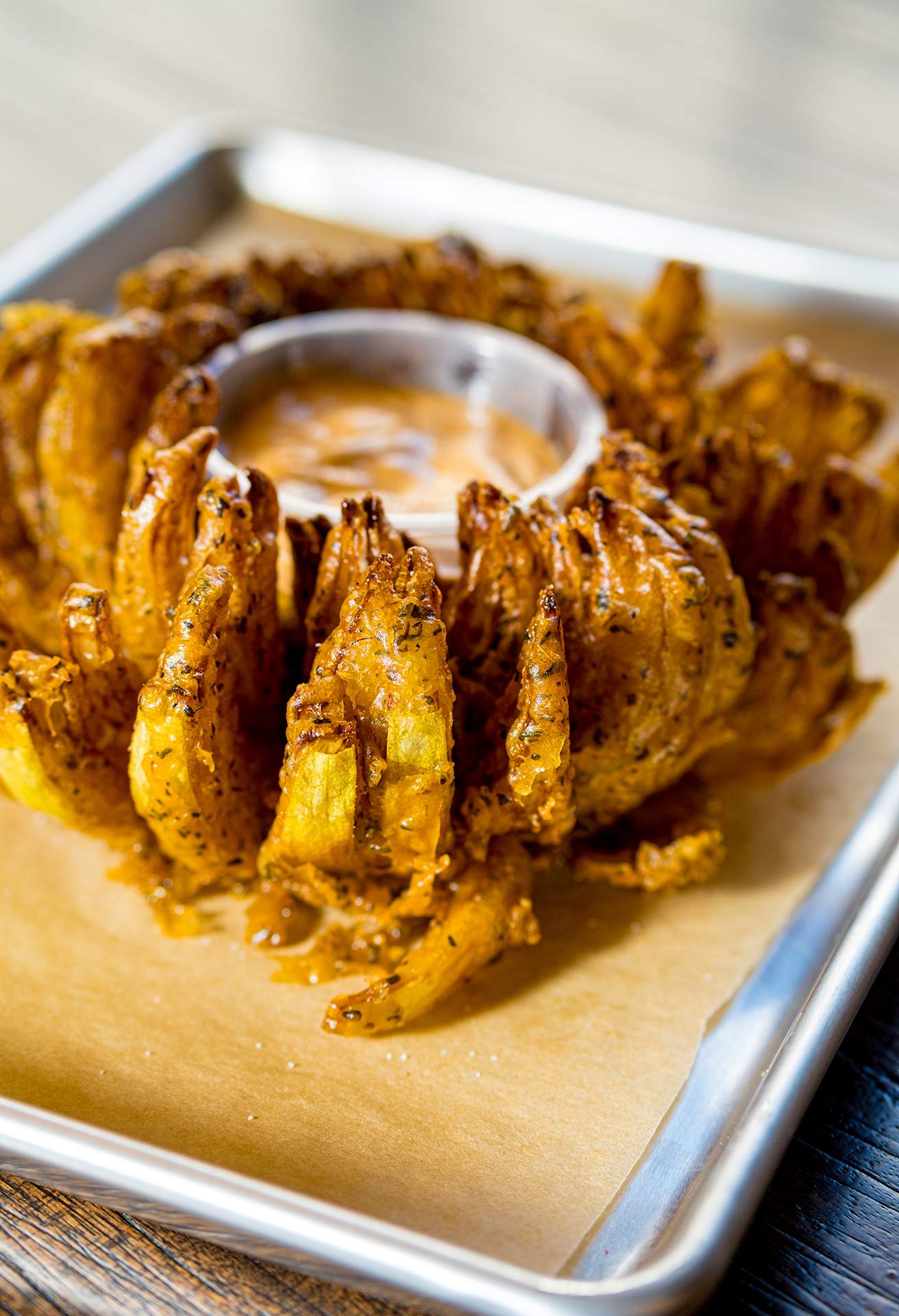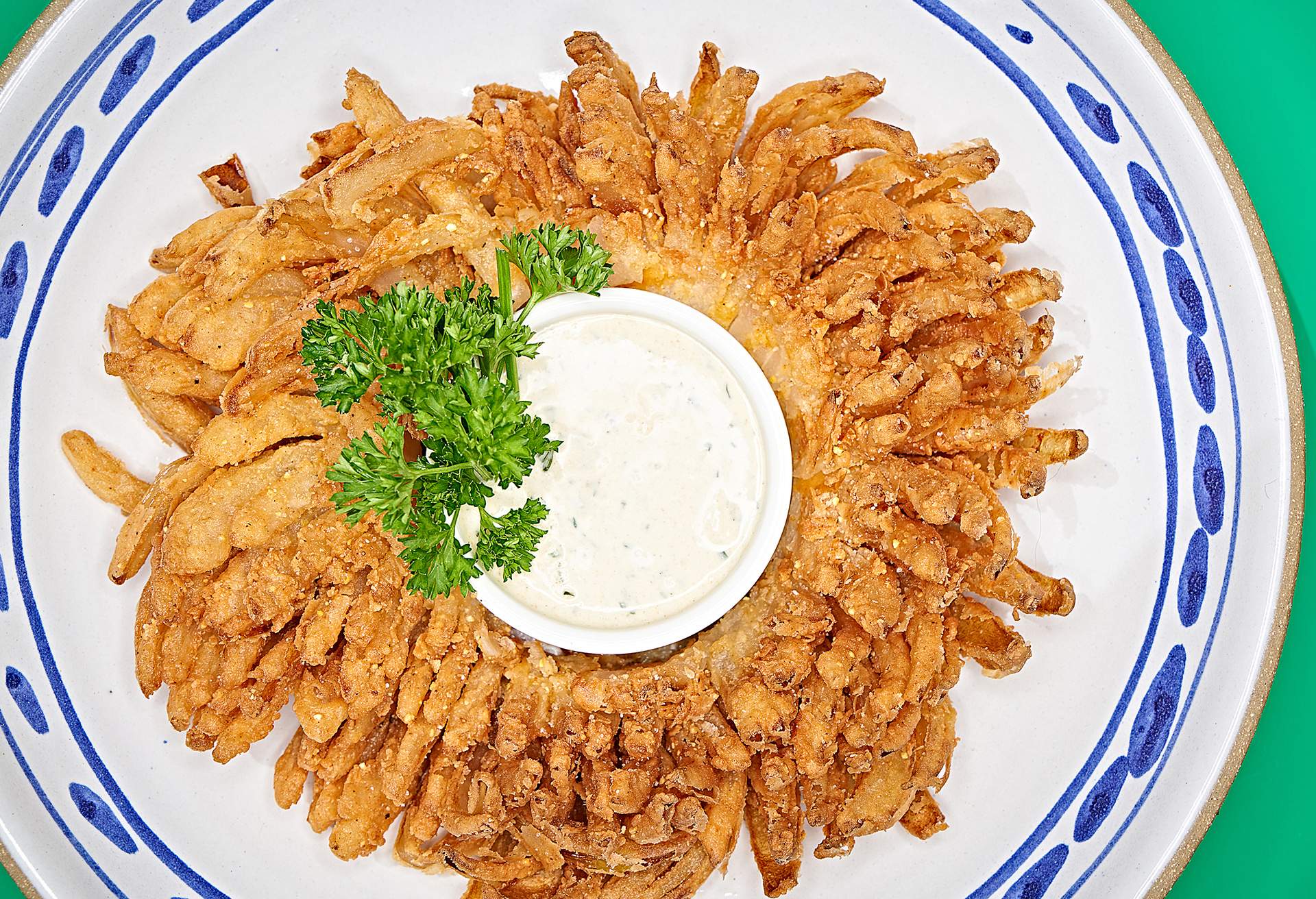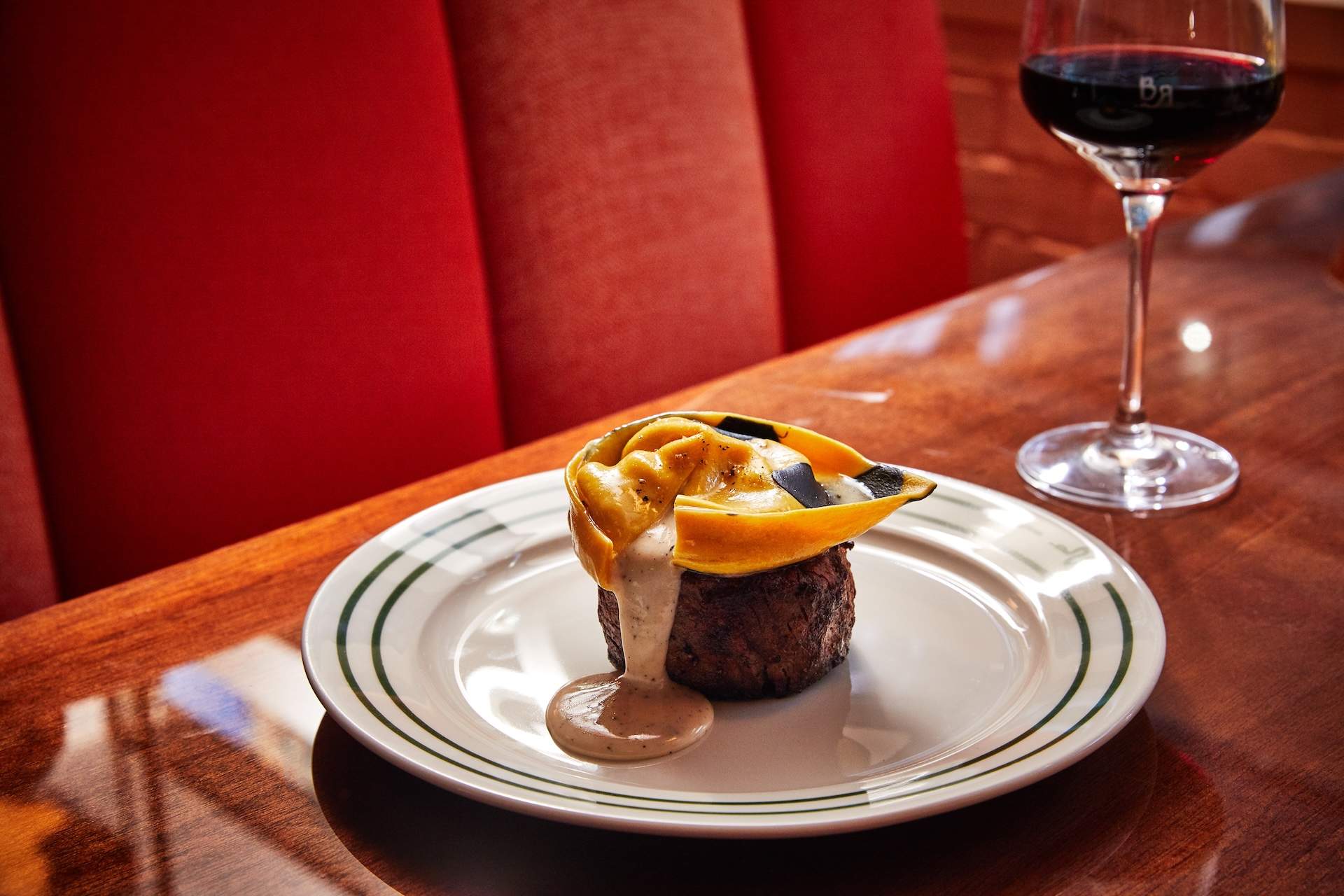Long before instagram, there was an iconic menu item that rose to popularity at least in part for its dramatic looks: the Bloomin’ Onion™.
“There is no more show-stopping, mind-blowing dish than an enormous flowering onion. It’s the perfect centerpiece,” says chef Ronnie Muñoz, who gave the “flowering onion” pride of place on the menu at his new Los Angeles restaurant, Ronnie’s Kitchen and Cocktails.
For the uninitiated, a blooming onion is a huge onion cut so that the slivers unfurl like a blossoming flower when battered and deep fried. It was popularized and trademarked by Outback Steakhouse in 1988 when it appeared on its opening menu and has been a mainstay at the chain for 34 years now.
And now, after decades of popularity in some circles and disrepute in others, flower-shaped fried onions going by various non-trademark protected names are turning up on tables at trendy, independent restaurants made by chefs like Muñoz.
The fried onion flower’s past
The blooming onion was probably invented in the mid 1980s in New Orleans, a city no stranger to ultra-rich fried foods, at Russell’s Marina Grill, where it still goes by the name of “onion mum.” The founder of Outback Steakhouse worked at Russell’s at the time.
Like any runaway success, the blooming onion was doomed to inevitable backlash—it was only a matter of time before nutritionists led the takedown. The blooming onion and its many imitators (see: Chili’s momentary “Awesome Blossom”) has been named on countless lists of most unhealthy restaurant foods thanks to its eye-popping nutritional profile.
So while the blooming onion has never exactly disappeared from popular culture, it also was never a thing you’d expect to find at a buzzy, independent, chef-driven restaurant, either. In fact, it became something of a joke, a déclassé avatar of chain restaurants and the people who love them.
Now, chefs are celebrating it and rehabilitating its reputation.
An allium with Proustian power
Chefs say a sense of nostalgia and longing for comfort food draws them to the humble fried onion.
“I remember sharing a few Bloomin’ Onions in the Chicago suburbs with my family over the years,” says award-winning, fine dining-trained chef Greg Baxtrom. His new Brooklyn restaurant, Patti Ann’s, is all about nostalgia, family, and the 1990s, he says—Patti Ann’s namesake is Baxtrom’s mom.
His version of the onion pays tribute to these memories, and it’s a dish that clearly resonates with diners. “It’s on every single table,” says Baxtrom. “It’s the most fun dish I’ve done in years.”
On the other hand, Muñoz, formerly of fine-dining establishments including Tom Colicchio’s Craft, had never actually had a blooming onion until a couple of months ago. “I was like, this could be great. An elevated, grown-up version could really be a beautiful dish,” he says.
It was a perfect fit for Ronnie’s, a restaurant inspired by nostalgia and the chain restaurants so many people grew up with. At Ronnie’s, you’ll also find iceberg salad, macaroni and cheese, and chicken tenders—all familiar, but refined with serious culinary technique. The menu is designed to bring back memories.
Elevating the appetizer with technique

There’s a lot more to making 2022’s upgraded fried onion flower than meets the eye. The ranch dressing Baxtrom serves as a dipping sauce for Patti Ann’s onion includes 28 ingredients. “It’s pretty much the same way I made ranch dressing at Per Se,” he says.
The onion itself has a similar level of fine dining-style attention lavished on it. “Because I’m obnoxious, we soak it for a full day in a buttermilk bath to make it softer to eat. We also use a little cornmeal in our batter to add texture without changing it too much,” he says. Before frying, the bathed and battered onion gets a vigorous shake to expel every mote of excess flour.
At Ronnie’s, chef Muñoz coats his onions “petals” in a tempura-style batter seasoned with a mixture of French herbs. He uses a carefully calibrated mix of all-purpose flour, potato starch, and baking soda to achieve a greaseless, crisp exterior and a tender, onion-forward interior. “The batter bubbles beautifully. It looks just like a tempura vegetable,” he says. The dipping sauce is a house-made mayonnaise spiced with cajun-creole flavors.
The nostalgic treat people need now
Cheffy flourishes don’t seem to be the real reason this dish is having a moment. It’s more about a return to all things comforting and familiar, things that take people back to a less catastrophe-ridden time, according to the chefs making them.
“When I think of my chef friends, now that we’re in more control of our careers, we’re opening up places that are homey and nostalgic. Patti Ann’s is closer to my identity than any other restaurant,” says Baxtrom.
He’s also considering the current mood of the dining public. “People are exhausted. It doesn’t mean they can’t have food and restaurants that are thought-provoking. We all need that stuff,” says Baxtrom. “But I didn’t want to open a restaurant right now that furthers that exhaustion.”
And the consensus among chefs and diners alike is that a Bloomin’ Onion by any name is a comfort food that couldn’t be easier to love.




